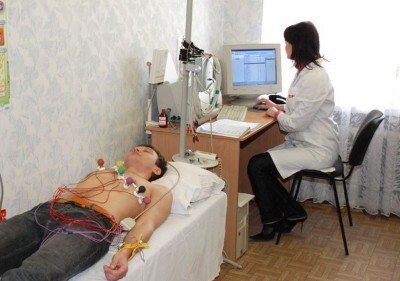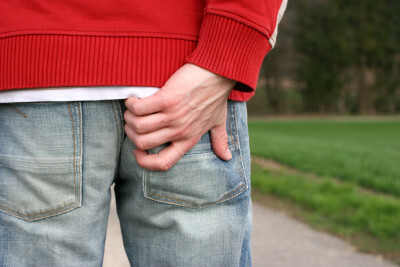1 Description of pathology
The duodenum, that is, the duodenum, is the initial section of the small intestine located immediately after the stomach. In an adult, the duodenum has a length of about 30-40 cm. From the stomach, the duodenum( duodenum) is separated by a special sphincter, the so-called gastric gatekeeper. Because of this, stomach ulcers and 12 duodenal ulcers very often develop in parallel. Through the ducts, this intestine communicates with the gallbladder and pancreas. The initial department is a bulb of the duodenum - enlarged with longitudinal arrangement of the folds of the mucous membrane.
Do you have gastritis?
GALINA SAVINA: "How easy is it to cure gastritis at home for 1 month. A proven method - write down a recipe. ..!"Read more & gt; & gt;
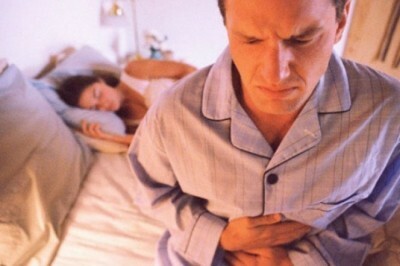
We recommend you to read
- Preparing for EGD of stomach
- Symptoms and manifestation of bowel cancer
- How to treat stomach and duodenum ulcers
- Effective remedy for gastritis and stomach ulcer
A healthy gut provides a decrease in the acidity of the food coming from the stomach( hummus) and the protection of the intestine from the intake of hummushigh acidity and chemistry. Peptic ulcer disease begins with the destruction of the mucosa and submucosa of its walls under the influence of various factors. Very often ulcerative disease affects the bulb of the duodenum.
Under the influence of the disease, the secretory, evacuation and motor functions of the organ are disrupted. From peptic ulcer of 12 duodenal ulcer, people are young and middle-aged, mostly men. In women, this ailment is observed much less often. With a stable menstrual cycle in women, the symptoms of peptic ulcer are less pronounced, the ailment usually proceeds without taking acute forms.
Disease, as a rule, proceeds in a chronic form with alternation of relapses and remissions. On this basis the following forms of the disease are distinguished:
- mild - no more than 1 relapse annually;
- moderate - no more than 2 relapses per year;
- severe - 3 or more relapses every year.
Ulcer of the bulb of the duodenum will be determined by localization. Along with this, it is also possible to detect a disease such as an ulcer of the postlucosa of the duodenum. In the current process of lesions of the mucous membranes, the disease passes through such stages as remission, exacerbation of the ulcer( relapse), scarring of the formed lesions.
Therefore, if you have any unpleasant symptoms in the upper abdomen, you should immediately consult a gastroenterologist. In most cases, it allows you to cure the disease without surgery.
-
 IMPORTANT TO KNOW! Gastritis? Ulcer? To have a stomach ulcer not turned into cancer, drink a glass. ..Read the article & gt; & gt;
IMPORTANT TO KNOW! Gastritis? Ulcer? To have a stomach ulcer not turned into cancer, drink a glass. ..Read the article & gt; & gt;
2 Causes of
Causes of which the 12 duodenal ulcer is affected by the ulcer, allows you to divide the resulting damage into stressful, shock or steroid. The appearance of duodenal ulcers may contribute to:
- infection with the Helicobacter pylori microbe;
- effect on the mucosa of rough food, irritating substances coming from the stomach;
- susceptibility to gastritis or duodenitis;
- long-term use of certain medications;
- excessive consumption of strong natural coffee;
- abundant smoking and drinking alcohol;
- stressful situations that cause spasm of small vessels;
- hereditary predisposition.
3 Etiology of the disease
The main symptoms of stomach and duodenum ulcers are very similar. This is primarily:
- pain, stopping after another meal;
- nausea and vomiting;
- heartburn;
- lack of appetite;
- flatulence.

These symptoms of duodenal ulcer manifest themselves not only when the ulcer affects such an important part of the body as the bulb of the duodenum, but also when there is an extra-bulbous ulcer formation.
Pain in case of an ulcer occurs 1.5-2 hours after another meal. There are also so-called hungry pains that occur with prolonged abstinence from eating. Such pain can appear, for example, in the morning after a night's sleep. Such a pain syndrome is the first sign of a peptic ulcer.
-
 Gastroenterologist. IMPORTANT: "I beg you, if you began to worry about abdominal pain, heartburn, nausea, do not in any way do gases. .."Read more & gt; & gt;
Gastroenterologist. IMPORTANT: "I beg you, if you began to worry about abdominal pain, heartburn, nausea, do not in any way do gases. .."Read more & gt; & gt;
Why do these symptoms of stomach and duodenal ulcers manifest themselves? Painful sensations begin with the action of acids coming from the stomach to the destroyed walls of the intestine and inflamed tissues. Disturbed functioning of the stomach causes heartburn, belching, vomiting, bloating. Perhaps a latent( asymptomatic) course of the disease. This is especially common among older patients.
4 Possible complications of
Peptic ulcer of the duodenal ulcer leads to the development of a number of complications that create additional problems and a danger to the overall health. It can be:
- damage to the arteries and, as a consequence, intracavitary bleeding;
- stricture and pyloric stenosis of the pylorus of the stomach, due to which the process of passage of food masses from the stomach cavity to the 12-colon is disturbed;
- duodenal stenosis;
- cancer of the duodenum;
- intestinal periduodenitis;
- acquisition of a perforated( perforated) ulcer;
- development as a result of inflammation of peritoneal tissue( peritonitis).
ADVICE FROM THE MAIN GASTROENTEROLOGIST
Korotov SV: "I can recommend only one remedy for the rapid treatment of Ulcer and Gastritis, which is now recommended by the Ministry of Health. .." Read testimonials & gt; & gt;
Therefore, the first symptoms of an ulcer of the duodenum should alert the person. He should go to a specialized clinic where appropriate tests will be performed and the necessary treatment will be prescribed.
5 Diagnosis
Precise diagnosis of ulcers is very important for drawing up the right clinical picture and prescribing the necessary course of treatment. Therefore, after conducting an anamnestic conversation with the patient and a general examination, the doctor necessarily prescribes such research procedures as:
- laboratory tests of blood, urine, feces, vomiting of the patient;
- esophagogastroduodenoscopy( EGDS);
- fibrogastroduodenoscopy( FGDS);
- X-ray examination;
- endoscopy of the stomach, during which the sampling of tissues and stomach contents( biopsy) is performed for analysis.
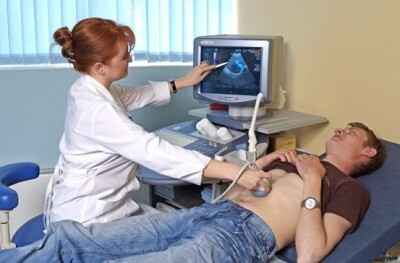
6 Therapeutic measures
The question of how to treat an ulcer in a particular patient is decided by a gastroenterologist after studying all the anamnestic data. Pharmacological treatment of ulcer of the duodenum is performed with the aim of eliminating Helicobacter pylori, reducing increased intragastric acidity;restoration of the integrity of damaged tissues and prevention of complications.
WE RECOMMEND!
For prevention and treatment of gastrointestinal tract diseases our readers advise Monastic tea. This unique remedy consists of 9 medicinal herbs useful for digestion, which not only complement, but also enhance each other's actions. Monastic tea will not only eliminate all symptoms of the gastrointestinal tract and digestive system, but will also permanently eliminate the cause of its occurrence.
The opinion of doctors. .. »
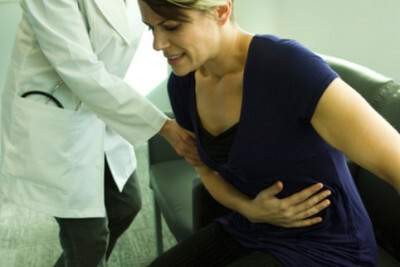
The treatment plan is compiled by the attending physician especially individually for each specific patient. Preparations are selected from such groups as:
- antibiotics;
- analgesics;
- antispasmodics;
- antacids;
- prokinetics;
- gastroprotectors;
- bismuth-containing drugs.
The indicated medicines for ulcer of the duodenal ulcer are treated orally, intramuscularly or drip. A carefully designed scheme will cure the disease without surgical intervention.
Drugs should be administered to patients strictly in accordance with the recommendations of the attending physician regarding dosage and timing of medication. Only in this case the treatment of peptic ulcer will be successful.
7 Surgical intervention
Currently, modern medicine has sufficient capabilities to treat a duodenal ulcer without performing cavitary operations. Especially if the patient on time turned to a specialized specialist for the necessary help.
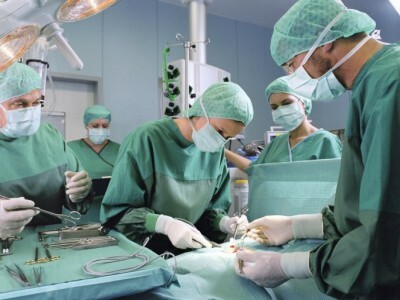
Nevertheless, occasionally there are cases when without surgery it will not be possible to manage. Most often, this is necessary if the patient has internal bleeding or when the ulcer takes a perforated( perforated) nature. In these cases, the operation of a cavitary operation is usually the only method of treatment.
The main types of surgical operations performed for the treatment of ulcers are:
- Removal of a 12-duodenal ulcer site destroyed by ulcers.
- Intersection of the vagus nerve( vagotomy) to reduce the secretion of gastric juice.
- Resection of the stomach to restore the continuity of the digestive tract.
8 Compliance with the diet and the
regimen To ensure that the ulcer of the duodenum has been cured, diet and diet regimen are very important. During the treatment of ulcers, the patient should take food 5-6 times a day in small portions. It is desirable that this happens at the same time. Take your food in a cleaned form. Her temperature should not be higher than the normal temperature of the human body.

It is necessary to adhere strictly to the diet, compiled by a dietician on the basis of the instructions of the attending physician-gastroenterologist. The basis of the ration for patients with ulcers are dietary soups with low-fat meat broth, vegetable soups and purees, boiled porridges. Milk and dairy products are selected individually, as in some patients their use causes a negative reaction.
Categorically forbidden, especially during an exacerbation of ulcers, products such as:
- sweets;
- baking, especially from yeast dough;
- fried;Pickles
- ;
- marinades;
- spices and spices;
- alcoholic beverages.
From chewing gum should also be discarded.
In addition to diet, the patient is recommended to follow the following routine measures:
- normalization of night sleep;
- additional rest during the day;
- is a calm, measured way of life;
- positive emotional mood;
- walks in the fresh air as far as possible.
To prevent the development of ulcers, it is necessary:
- to eat regularly and regularly;
- lead a correct lifestyle;
- to abandon bad habits;
- to avoid nervous and physical overvoltages.
Stay healthy!
- 1 Description of the pathology
- 2 Reasons for the onset of
- 3 Etiology of the disease
- 4 Possible complications
- 5 Diagnosis
- 6 Treatment measures
- 7 Surgical intervention
- 8 Compliance with diet and regimen
One of the most common and dangerous diseases of the gastrointestinal tract is duodenal ulcer, the symptoms and treatment of this disease are of interest not only to patients suffering from it and people at risk, but also those who are used to taking care of their health,in time tracing dangerous signs to consult a doctor for help.

